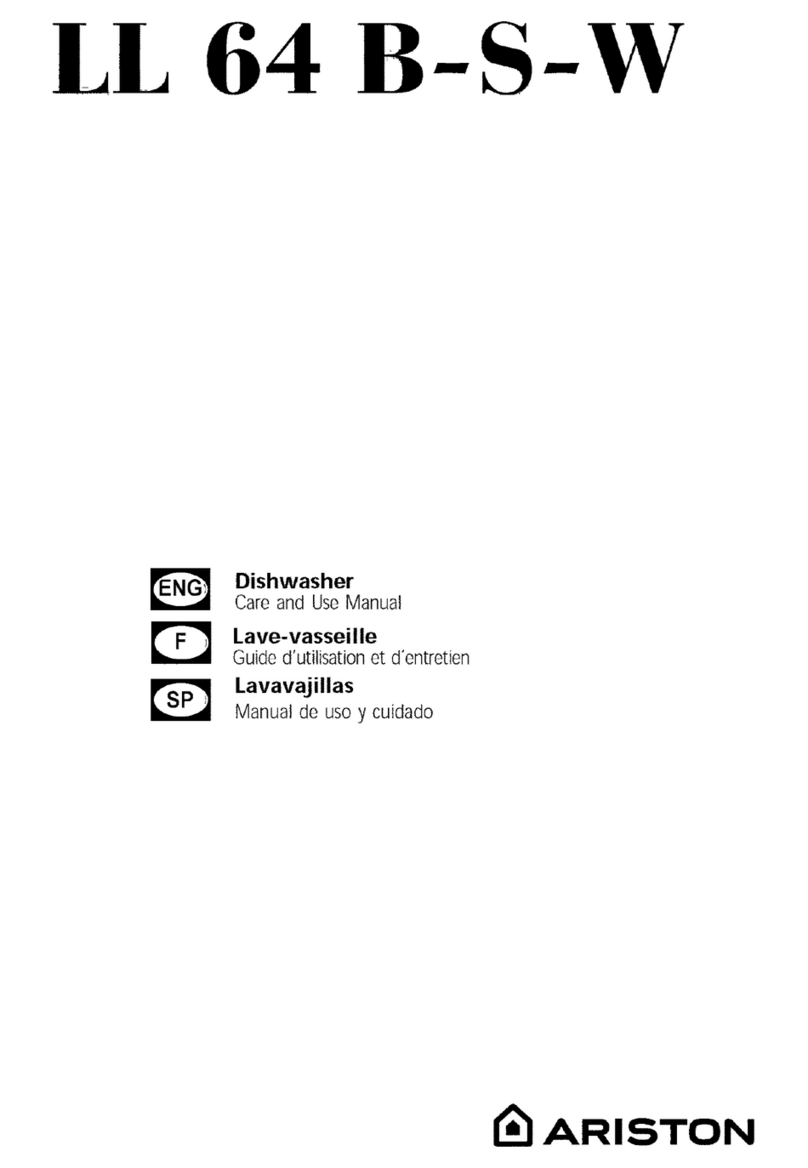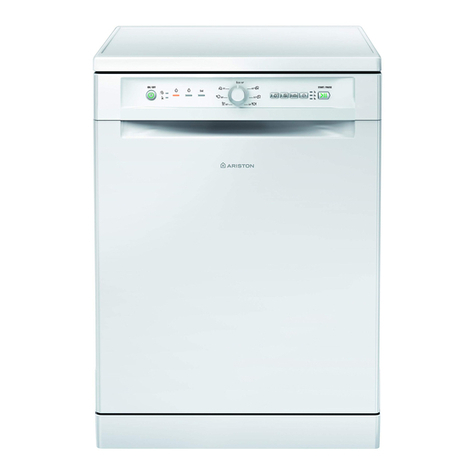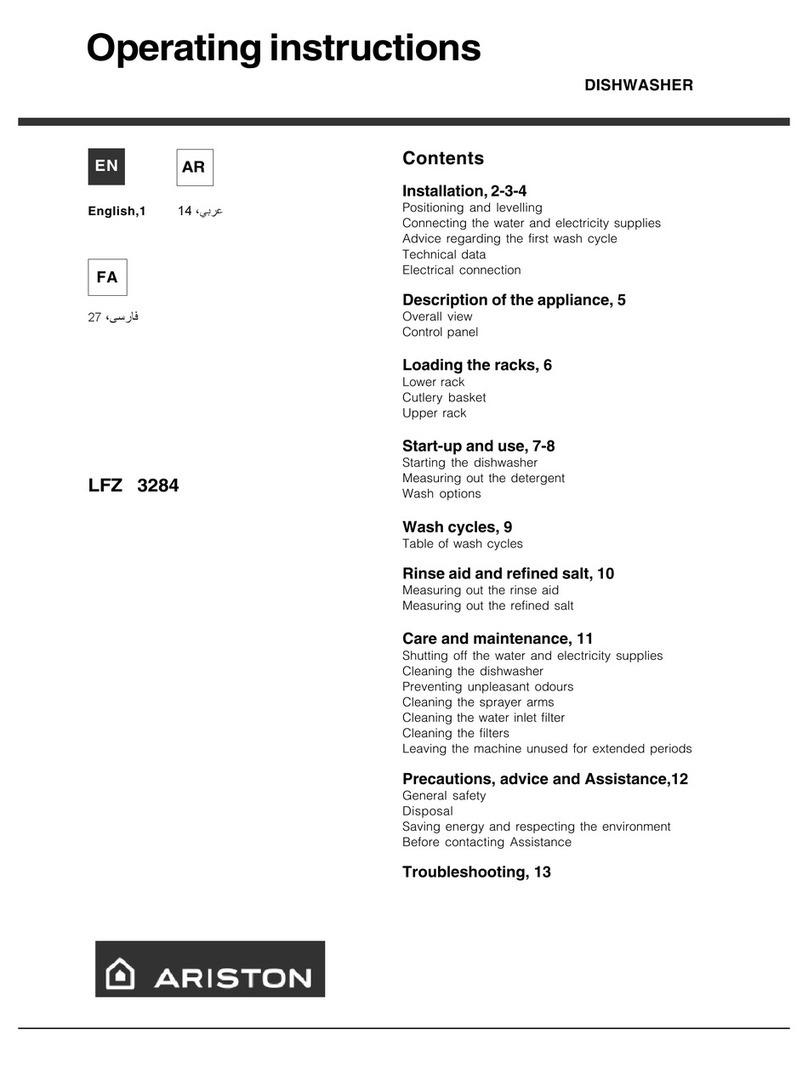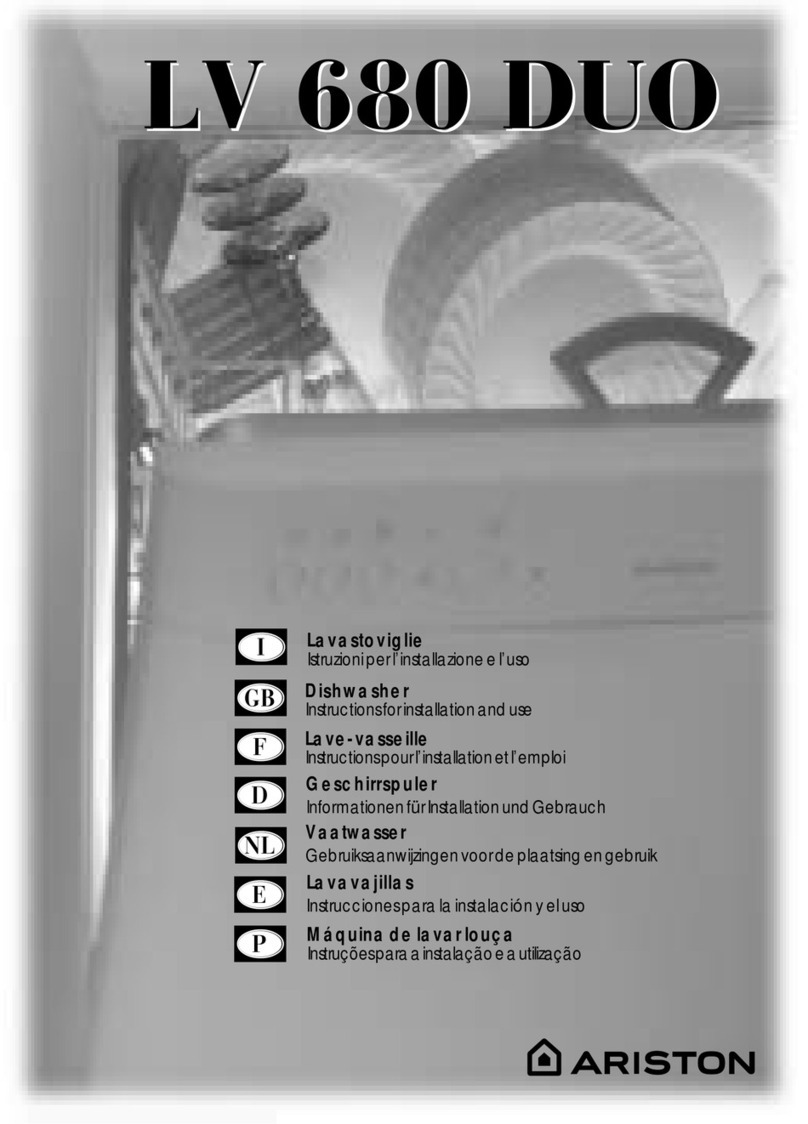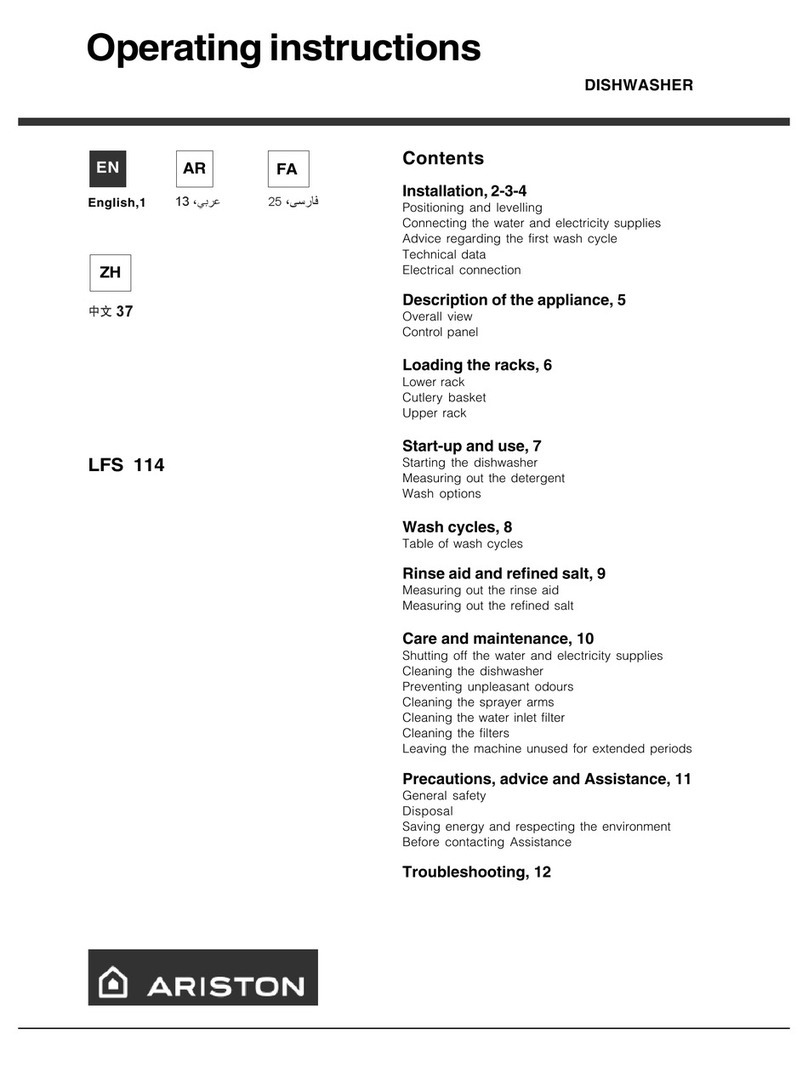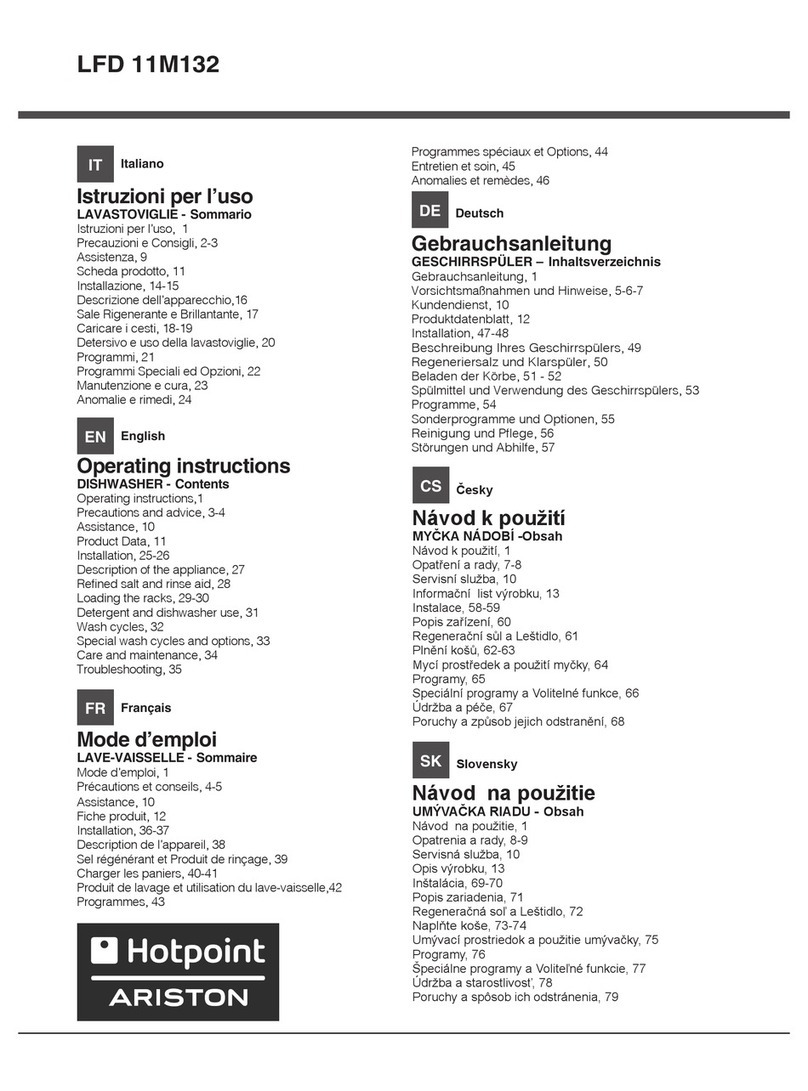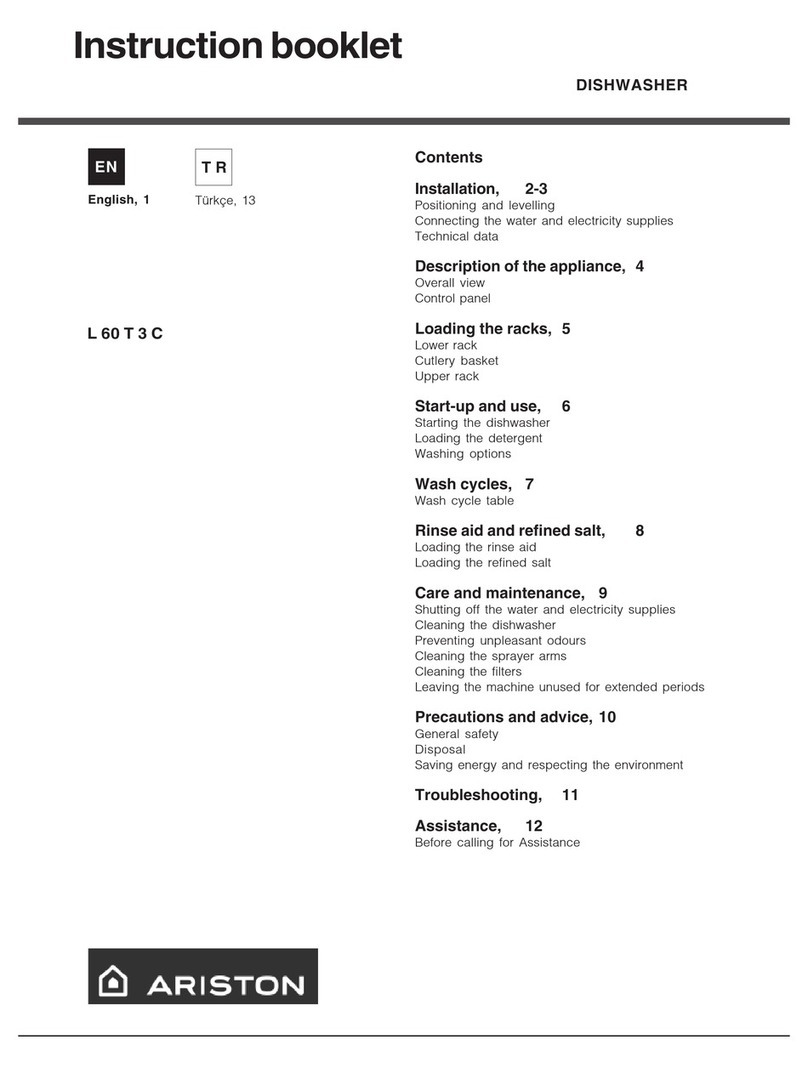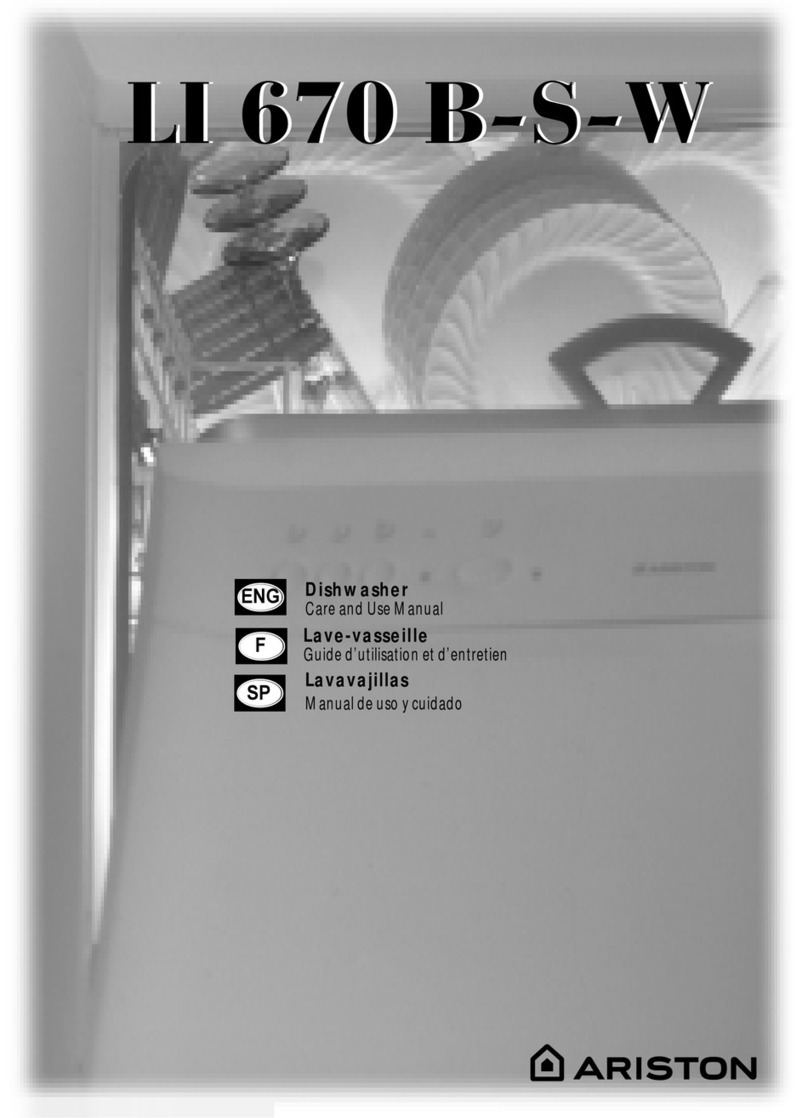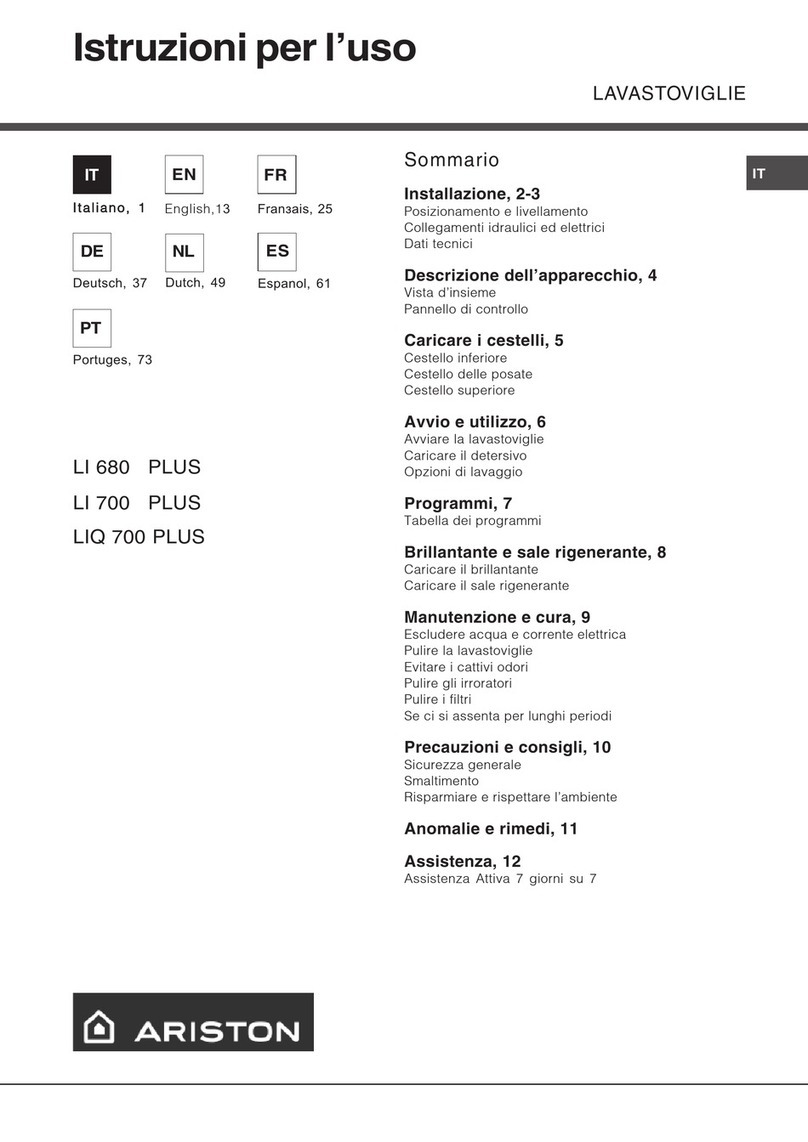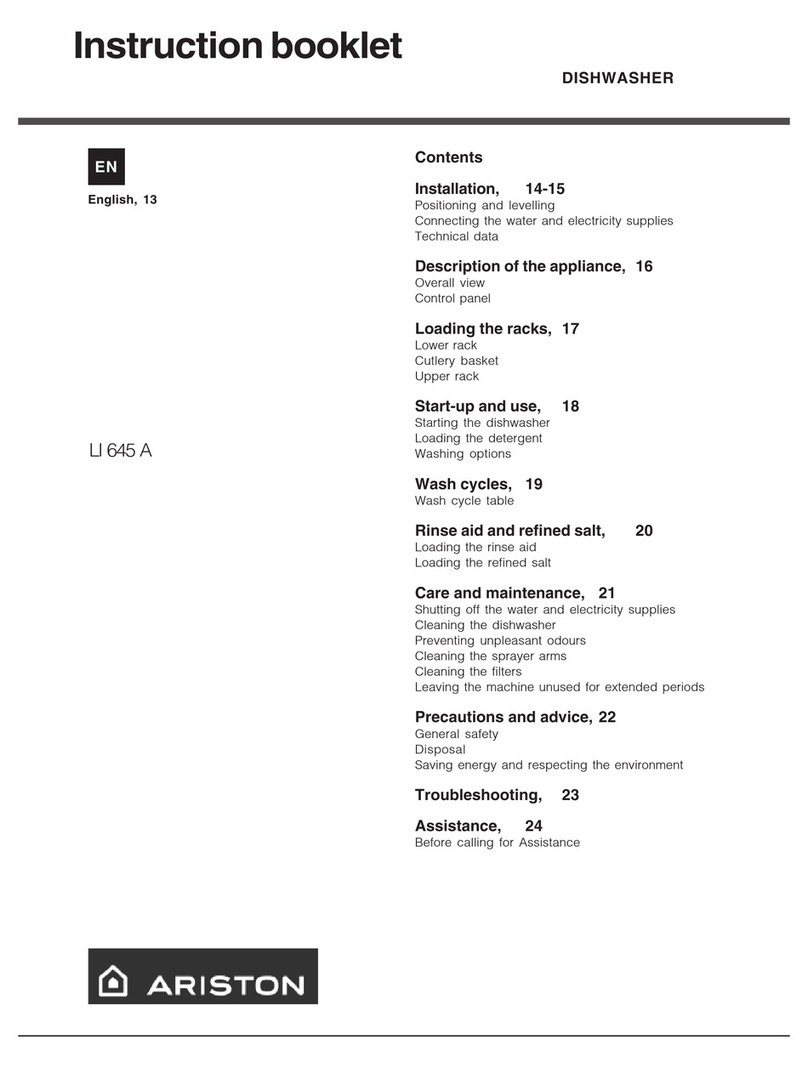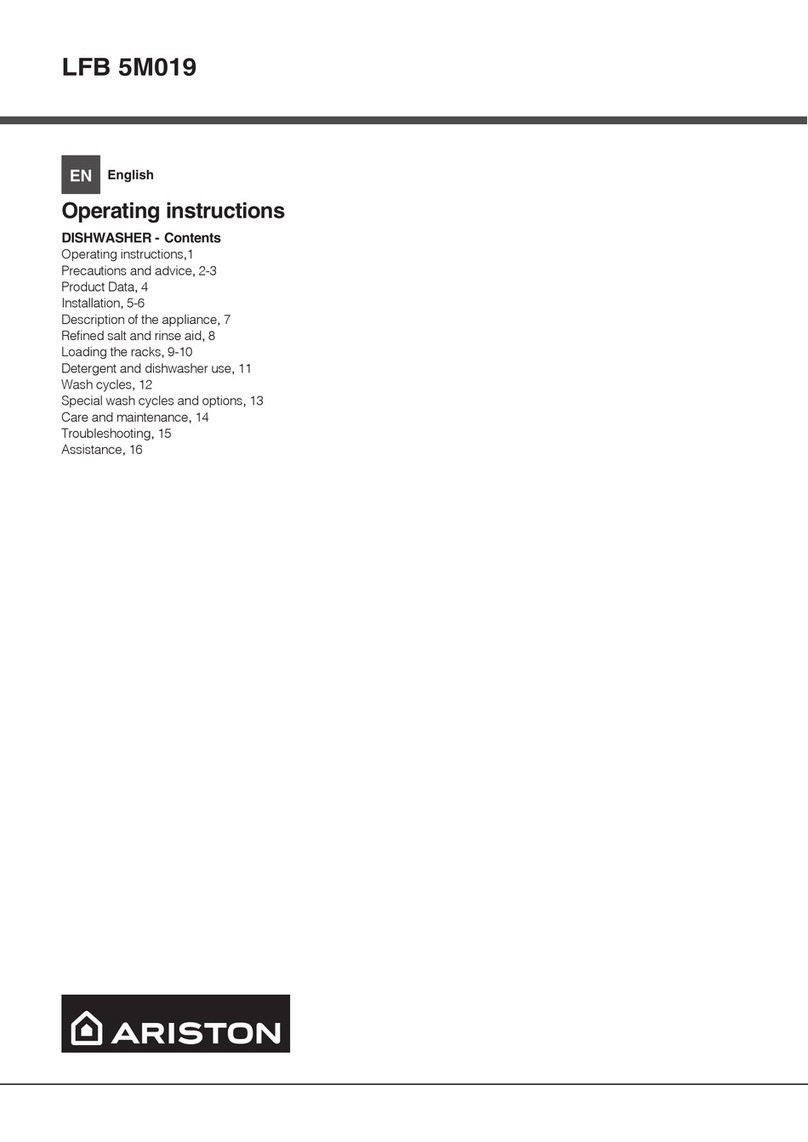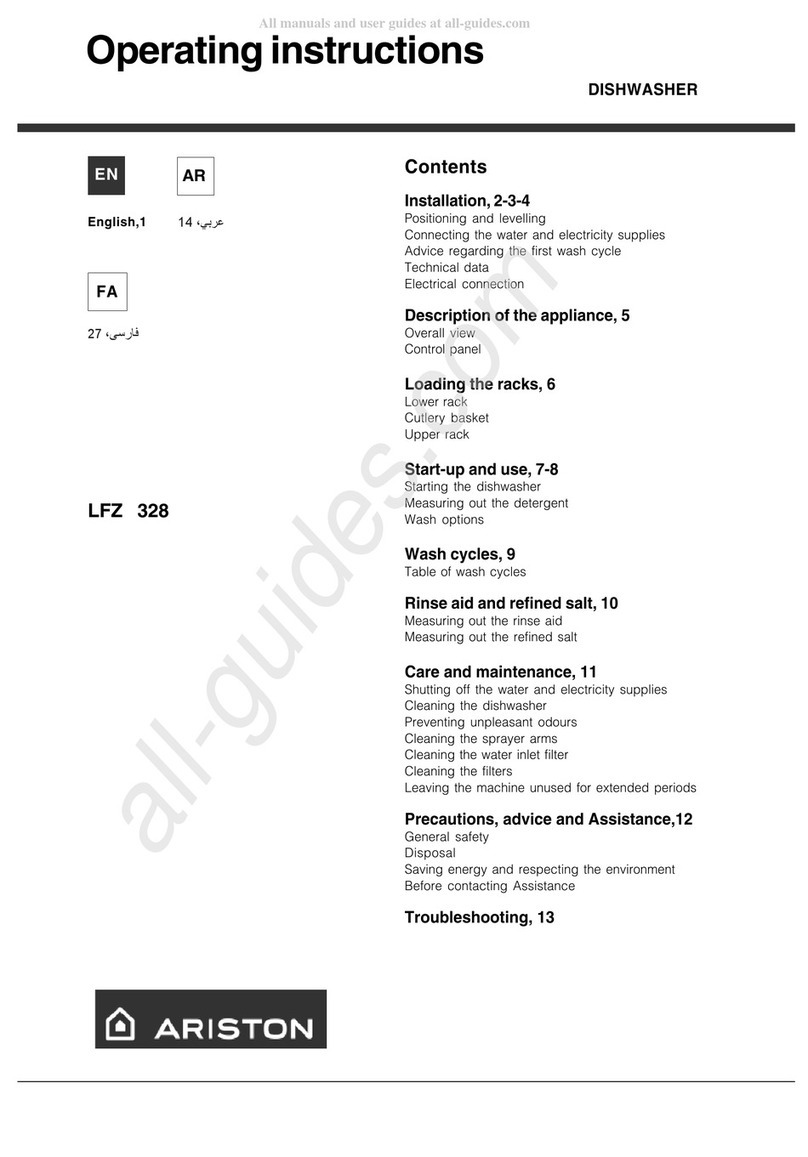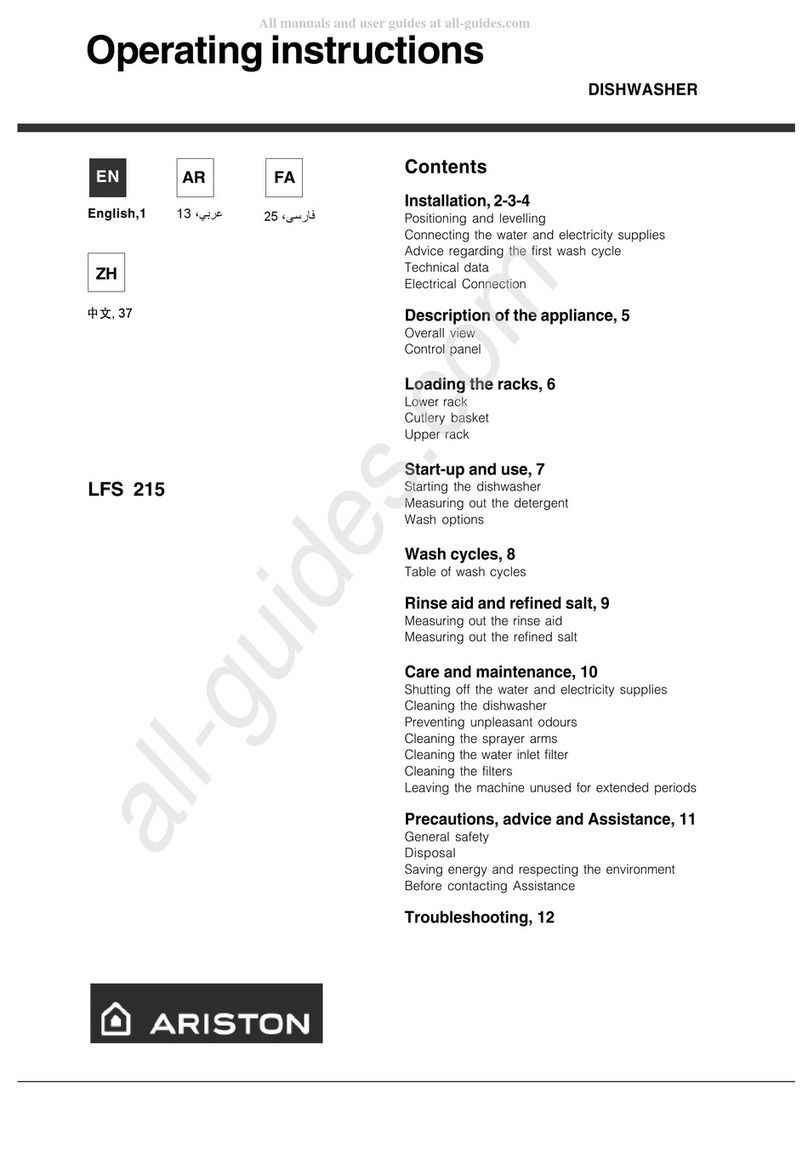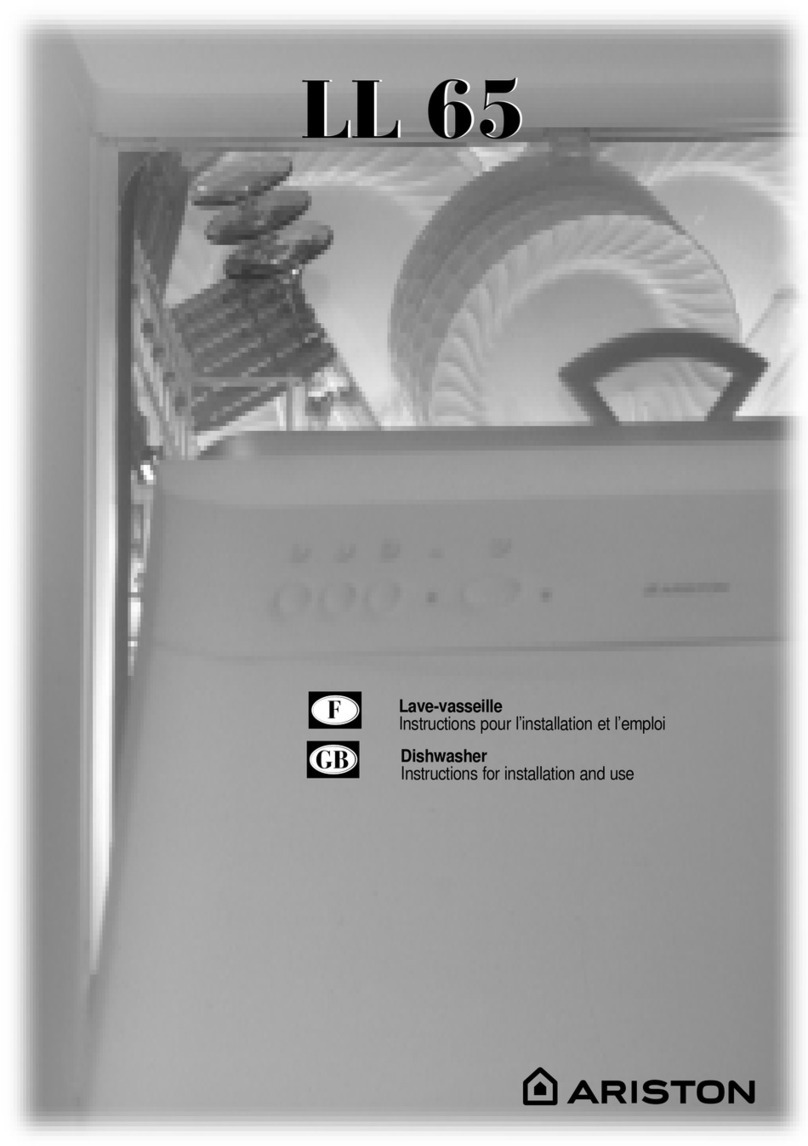8
ARISTON DISHWASHER - Instructions for installation and use
DISHWASHER
If the power
socket to which
the appliance is
connected is not
compatible with
the plug, replace
it with a suitable
plug rather than
using adapters or
multiple plugs as
these could cause
overheating or
burns.
Installation and moving
After having bought or moved your dishwasher to another home, a
correct installation ensures that your dishwasher will operate
smoothly and efficiently.
Cold water connection.
Connect the cold water supply
hose to a threaded 3/4 (gas)
connector,inserting thesmallfilter
suppliedwith the dishwasher and
making sure that it is fastened
tightly in place (see figure 2).
If the water pipes are new or have
not been used for an extended
periodof time, let the waterrun to
make sure that the water is clear
and free of impurities. If this
precaution is not taken, there is a
risk that the water inlet can get
blockedanddamagetheappliance.
Hot water connection.
Your dishwasher can be supplied
with hot water from the mains
supply(ifyouhave acentralheating
systemwith radiators) at a tempe-
rature of no more than 60°C.
In this case, the wash cycle time
will be about 15 minutes shorter
and the wash will be slightly less
effective.
The connection must be made to
hot water supply following the
sameproceduresasthoseindicated
forthecold water connection.
Drain hose connection.
Fitthe drain hose into adrain pipe
with a minimum diameter of 4 cm
or place it over the sink. Avoid
restricting or bending it. Use the
specialplasticelbowprovided (see
figure) to position it in the best
possible way. The free end of the
hoseshouldbebetween40and100
cm above the ground and should
notbe immersed in water.
Electrical connection.
First of all, check that the mains
voltage and frequency values
correspond to those stated on the
ratingplate locatedonthe stainless
steel inner door of the appliance
and that the electrical system to
whichthedishwasher isconnected
is sized for the maximum current
indicatedon said rating plate.
Choose where you want to install
your dishwasher, you can even
place it so that its sides or back
panelareside bysidewithfurniture
or up against the wall. The
dishwasheris provided withwater
supplyand drain hoses, which can
bedirected towardsthe leftorright
to facilitate appropriate
installation.
Easy to build-in
Thisdishwashermodelcanbebuilt-
in under a single worktop easily.
Pleaseread the instructions sheet.
Levelling.
Once the appliance is positioned,
adjustthe feet byscrewingthem in
orout depending on how high you
want it and to level it so that it is
horizontal.Make sure that it isnot
inclinedmore than2degrees. Ifthe
applianceislevel, itwill helpensure
itscorrectoperation.
Adjusting the back Feet
Insertthe applianceintothe cutout
andthenadjustthe heightusing the
screwslocatedonthefrontbottom
part of the machine. Use a
screwdriver to turn the screws in
the clockwise or anti-clockwise
direction to increase or decrease
the height respectively.
Your dishwasher has arrived
The special
plastic elbow
should be
fastened firmly
onto the wall to
prevent the drain
hose from
moving and
allowing water to
spill outside the
drain.
A
Fig.2
Earth: indispensable
safety.
Only now can you plug the
appliance into a socket provided
withan efficient earth connection
(the system's earthing is a
guaranteeof safetyprovidedfor by
law, make sure your system has
it).
Power supply wire.
Checkthepower supply wire on a
regular basis; if it is damaged, we
recommend you have it replaced
by an authorised technical
Assistanceservice centre.
